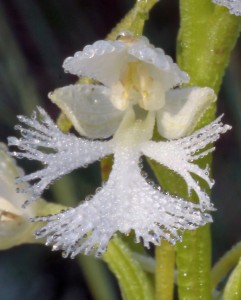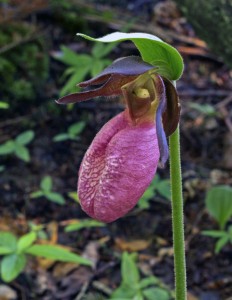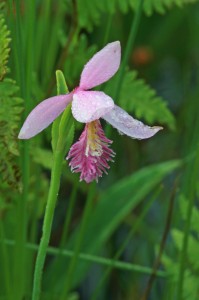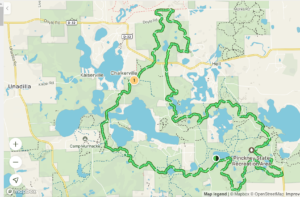
(Chelsea Update would like to thank Tom Hodgson and the Waterloo Natural History Association for the information in this column.
It has been a somewhat shortened, but impressive, woodland wildflower season this year.
The cool weather in April delayed the early bloomers, forcing them to flower simultaneously with those that appear later in the season. This made for a spectacular show while it lasted.
All good things must come to an end, however.The expanding leaves of the forest canopy mark the beginning of the end of the woodland wildflower season.
To continue to enjoy spring wildflowers, one must leave the forests and move to new environments.
Waterloo Recreation Area (WRA) is blessed with an abundance of bogs and fens that are home to some of the world’s most sought after wildflowers. These habitats are the last to thaw in the spring, and the first to freeze in winter.

Therefore, as the woodland wildflowers begin to fade, wetland wildflowers are just coming into their own.

There are 19 species of orchids known to grow in the WRA. Most of them inhabit the Park’s bogs and fens. These fragile wetlands are not very visitor friendly. The footing there can be treacherous at best. In addition, they are also home to poison sumac which can provide the careless hiker with an unpleasant rash that can last for a week or two.
Fortunately, those in the Chelsea area who would like to see some native orchids can walk the Discovery Center’s bog trail where boardwalks provides safe passage. The best time for a visit to the bog to view orchids is from now to the end of June.
Pink moccasin flower, one of the largest and showiest of the native orchids, is already in bloom and should continue to flower for another week or two.

The next orchid to bloom will be arethusa, considered by many to be our most beautiful native orchid. It is also called dragon mouth” because the fringed central lip of the flower appears to be covered with jagged teeth. Though small, their blossoms are both ornate and colorful. As the arethusa begins to fade, rose pogonia begins to bloom. This is another small orchid with a central lip covered with a toothy fringe. Expect to see this flower from mid to late June.

Also blooming in mid- to-late May is grass pink or calapogon. A prolific bloomer, grass pink may have as many as 20 blossoms on a single plant. The last orchid visible in the Discovery Center bog is the eastern prairie white fringed orchid. It blooms from late June to mid-July. Each plant has a single flower spike with as many as 40 individual blossoms.
To see the other fourteen species of orchids found in the park it will be necessary to visit some of the park’s most remote and inaccessible areas.
NOTE: The boardwalks along the bog trail will be replaced beginning sometime in June, and accessibility during the construction will be affected.
Contact the Discovery Center at 475-3170 or the Area Headquarters at 475-8307 for construction updates.












We Michiganders truly are blessed. I went to the Discovery Center a week ago for a one-hour bird watching tour and ended up staying an additional two hours to study and photograph the marvelous floral displays. Thanks for the article.